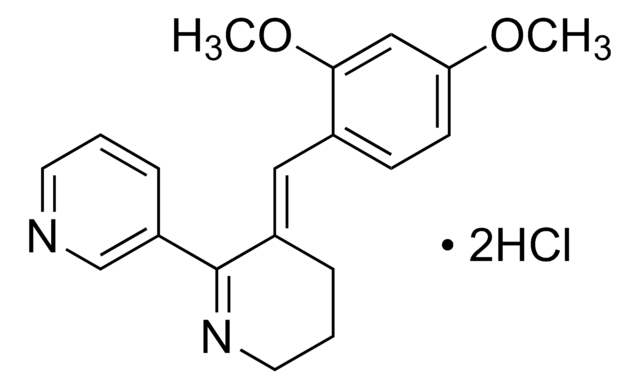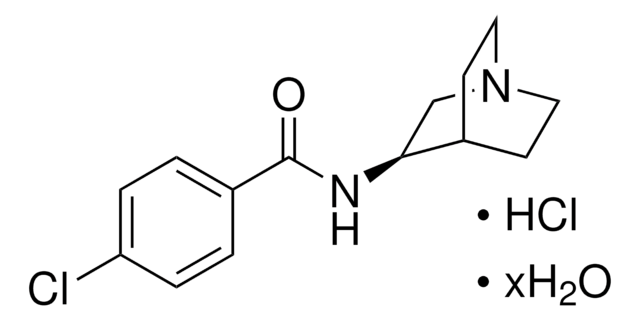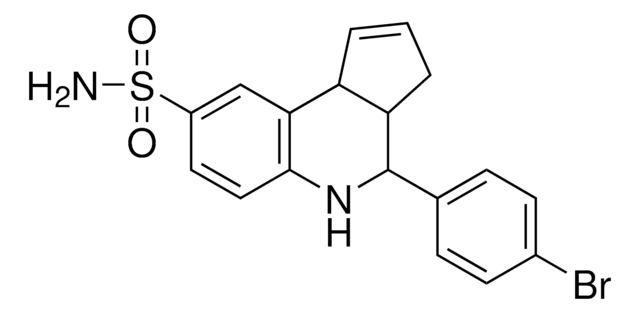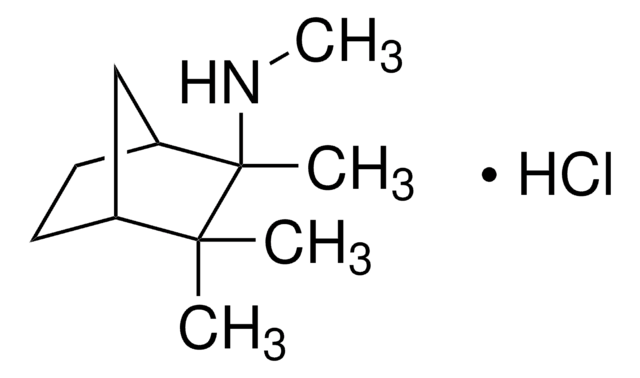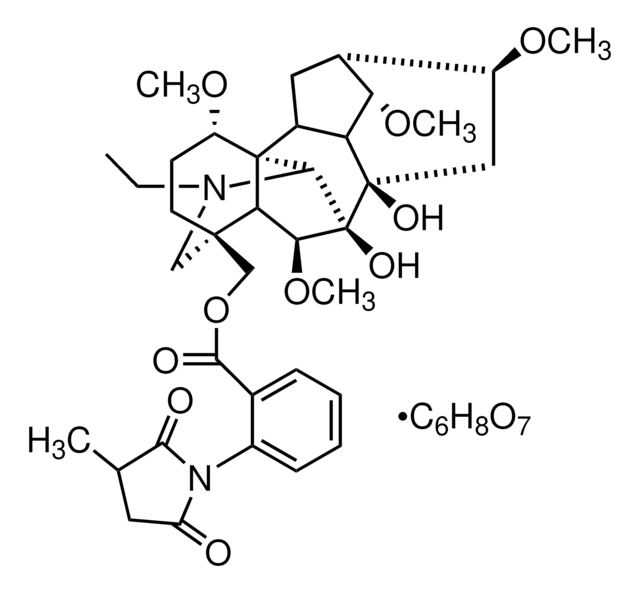Key Documents
SML0326
GTS-21
≥97% (HPLC)
Synonim(y):
3-(2,4-Dimethoxybenzylidene)-anabaseine dihydrochloride, DMBX-anabaseine, DMXB, DMXB-A, GTS21
About This Item
Polecane produkty
Próba
≥97% (HPLC)
Postać
powder
kolor
faintly yellow to dark yellow
rozpuszczalność
H2O: >5 mg/mL
temp. przechowywania
2-8°C
ciąg SMILES
Cl.Cl.COc1ccc(\C=C2/CCCN=C2c3cccnc3)c(OC)c1
InChI
1S/C19H20N2O2.2ClH/c1-22-17-8-7-14(18(12-17)23-2)11-15-5-4-10-21-19(15)16-6-3-9-20-13-16;;/h3,6-9,11-13H,4-5,10H2,1-2H3;2*1H/b15-11+;;
Klucz InChI
BXKYFUGAAFLYJL-BXGYHSFXSA-N
Zastosowanie
- as an α7 nicotinic acetylcholine receptors (nAChR) partial agonist to elucidate its anti-inflammatory effects in mouse macrophages
- to test its protective effect on the renal injury induced by lipopolysaccharide (LPS)
- to test its effect on microvascular inflammation in endotoxemia induced by LPS
Działania biochem./fizjol.
Cechy i korzyści
Kod klasy składowania
11 - Combustible Solids
Klasa zagrożenia wodnego (WGK)
WGK 3
Temperatura zapłonu (°F)
Not applicable
Temperatura zapłonu (°C)
Not applicable
Certyfikaty analizy (CoA)
Poszukaj Certyfikaty analizy (CoA), wpisując numer partii/serii produktów. Numery serii i partii można znaleźć na etykiecie produktu po słowach „seria” lub „partia”.
Masz już ten produkt?
Dokumenty związane z niedawno zakupionymi produktami zostały zamieszczone w Bibliotece dokumentów.
Nasz zespół naukowców ma doświadczenie we wszystkich obszarach badań, w tym w naukach przyrodniczych, materiałoznawstwie, syntezie chemicznej, chromatografii, analityce i wielu innych dziedzinach.
Skontaktuj się z zespołem ds. pomocy technicznej
